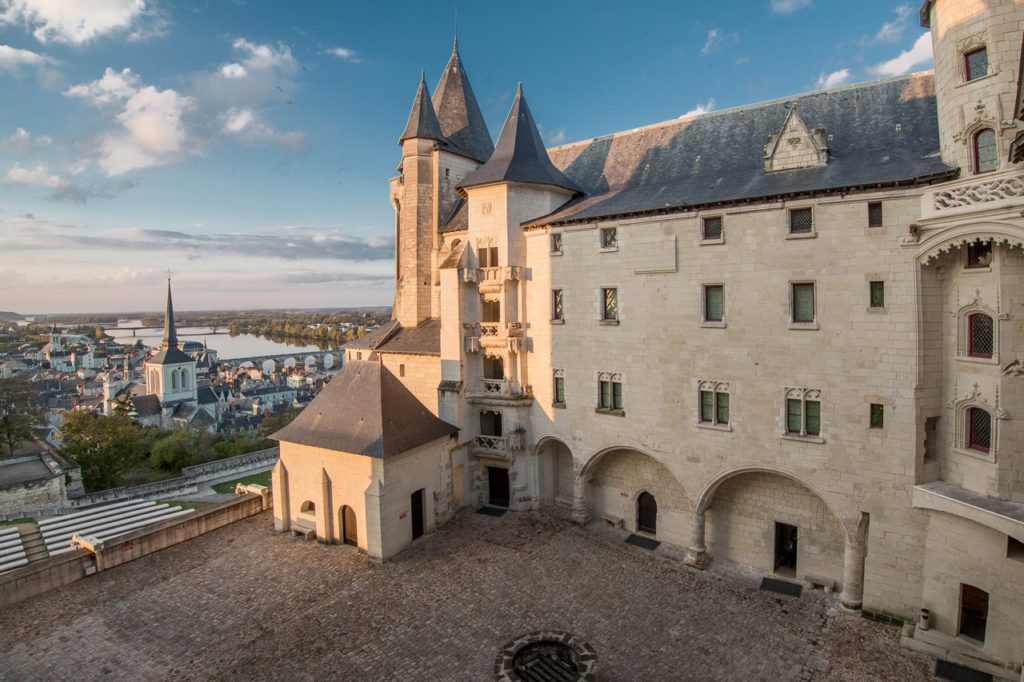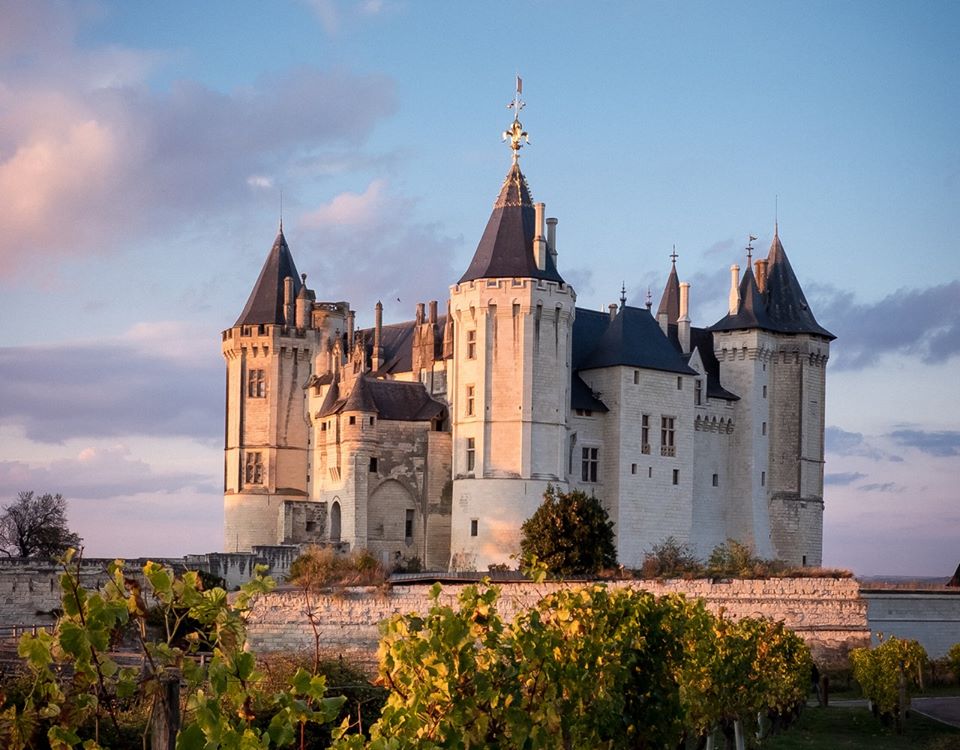Château de Saumur, one of the French royal châteaux in the Loire Valley, is located in the town of Saumur, overlooking the confluence of the Loire River and the Thouet River. Standing at the edge of an abrupt cliff, the castle boasts gorgeous views of the town and the Loire Valley. Theobald I, Count of Blois, initially constructed the castle as a fortified fortress in the 10th century. Since 1026, Fulk Nerra, Count of Anjou (an ancestor of the Angevin kings of England and some nobles from Anjou), owned the castle, and he bequeathed it to his Plantagenet heirs.

After it had been destroyed in 1067, the castle was rebuilt by King Henry II of England in the later 12th century. Henry II and his consort, Eleanor of Aquitaine, together or separately from their sons, visited Saumur many times. In 1188, Henry II held his Christmas court at the castle. Both King Richard I of England the Lionheart and King John of England visited Saumur from time to time. During John’s reign and the gradual fall and dismantlement of Angevin Empire, King Phillippe II of France, also called Augustus, seized the town and Château de Saumur, which he integrated into the French royal domain and possessions. Upon Philippe’s orders, the castle was fortified with 4 drum towers connected by thick curtain walls.
Later, the castle was developed as a château. During the Hundred Years’ War, Louis I of Anjou implemented upgrades to the château. In 1368, initial work started with construction of the north wing along the banks of the Loire River, including a great state room and chapel. In 1380, the west tower and wing were erected, as well as new châtelet entrance, which enclosed the quadrilateral castle. In the 14th and 15th centuries, the château was a palace of the Dukes of Anjou. It was a residence of King René I, or René of Anjou, who was also Count of Piedmont, Duke of Bar, Duke of Lorraine, Duke of Anjou, Count of Provence, briefly King of Naples, as well as titular King of Jerusalem and Aragon, including Sicily, Majorca, and Corsica.
René of Anjou, or King René I, converted Château de Saumur into a comfortable, beautiful Renaissance palace during the 15th century. The many lovely turrets, towers, machicolations, and moats transformed it into an elegant and fortified palace. As the place was a center of culture at the time and was loved by René, it was labelled ‘Château d’Amour’. Following René’s death in 1480, Château de Saumur and Anjou, fell back into the royal domain. In this new, the castle served as model for the famous illumination ‘Les Très Riches Heures du Duc de Berry’ (Book of Hours).
In 1589, Philippe Duplessis-Mornay became governor of Saumur, and at his behest, new fortifications were erected, but the works were completed only in 1646. For example, the star-shaped ramparts were built in 1590. By the end of the 17th century, the château was quickly deteriorating. This castle was very important during the Ancient Régime of the French monarchy, although since the 16th century the place was a residence for town governors. In the early 19th century, Napoleon Bonaparte made the château a state prison, preventing it from turning into ruins. The city of Saumur purchased the castle in 1906, then restored it and refurbished it with splendid Gobelins and Arras tapestries. Since then Château de Saumur has housed the Town Museum with a collection of equestrian artifacts from antiquity to the 20th century available for the public.
All images are in the public domain.
Text © 2020 Olivia Longueville






